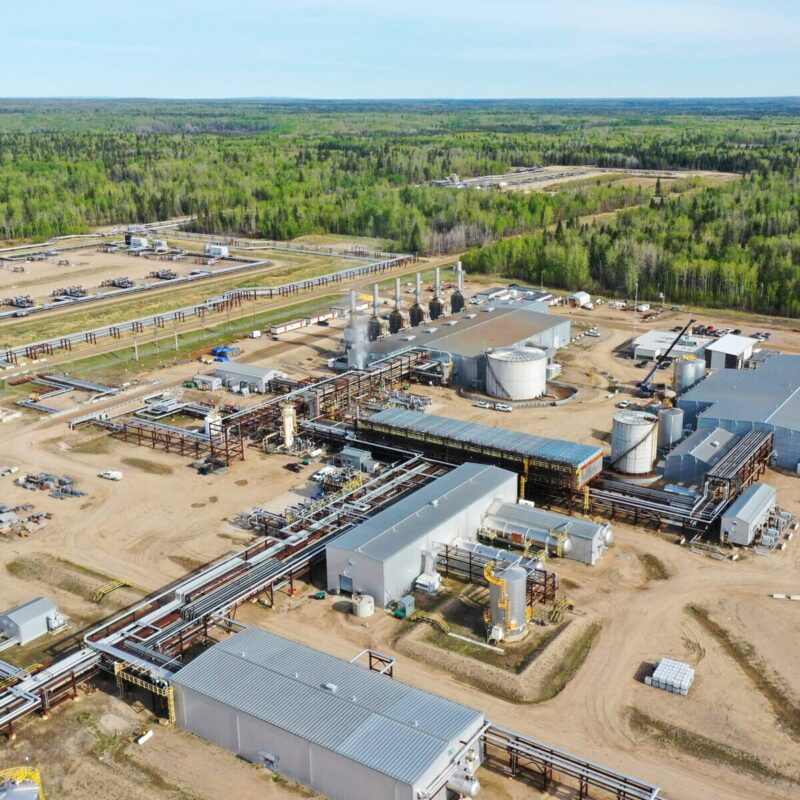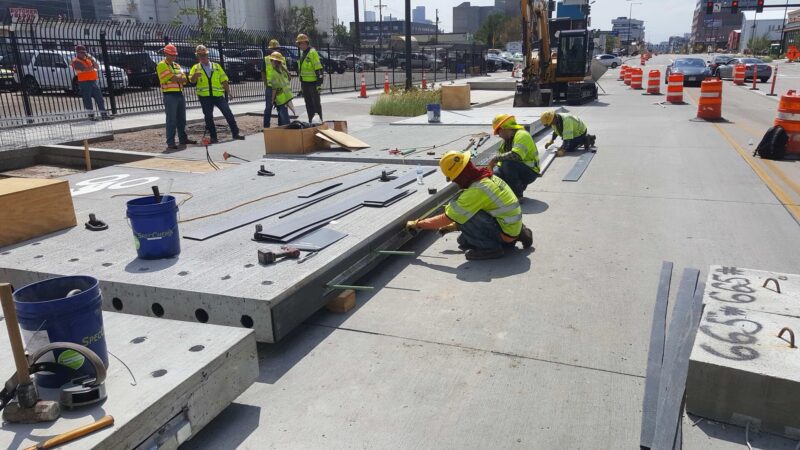Finland’s growing infrastructure maintenance backlog and the rising demands of the green transition call for a fundamental rethinking of how public investments are designed, financed, and delivered. As financing models increasingly replace traditional public funding, engineers, researchers, and public sector professionals must acquire new skills to design infrastructure and innovation projects that are both technically sound and financially viable. This shift challenges higher education institutions to rethink how to embed financial reasoning and real-world problem solving into the core of professional education.
The Growing Maintenance Backlog: A Challenge for Finland’s Public Infrastructure
In Finland, the maintenance backlog of public infrastructure has grown manyfold since the turn of the millennium. According to the State of Built Assets ROTI 2025 report, the current levels of public funding and the existing operational models will not be sufficient to maintain Finland’s public infrastructure at the current level in the long term (Tähtikunnas et al., 2025). Furthermore, the additional capital requirements for updating the public infrastructure to meet the demands of the green transition will only exacerbate the funding problem in the upcoming years (Krishnan et al., 2022).
In many areas in Finland, aging demographics and net negative migration further complicate the balance between infrastructure supply and demand (Statistics Finland, 2024). In general terms, the commonly accepted adage that the public sector must be a key player to de-risk industrial innovation is coming under pressure. Public budgets are constrained, research translation to innovation and industrial growth or renewal is uncertain, and taxpayers are wary of the value return on public sector funding deployment.
From the perspective of national defense, sustainable and sufficient access to financial capital is one of the most critical factors in maintaining security of supply (see e.g., Mahoney et al., 2024; Tuominen et al., 2023). In Finland, recent efforts to reduce the maintenance backlog have been funded by selling and privatizing public property, for example. In response to the growing capital requirements of public infrastructure, experts in Finland have highlighted the need for systemic change and bold experimentation in new frontiers of infrastructure provision (Tähtikunnas et al., 2023).
Educating for Value: How Infrastructure Finance Is Rewiring Engineering Mindsets
Five years ago, the Department of Civil and Environmental Engineering at the University of Michigan embarked on an educational experiment with a new Master’s program in Smart Infrastructure Finance. Rather than teaching students how to design infrastructure or climate transition projects based on engineering principles alone, the program wanted to ponder what would happen if public infrastructure design was informed by the constraints of funding and financing models (O’Brien et al., 2019). For example, how does the economic feasibility and design of a port, a bridge, an energy or water infrastructure project based on public funding differ from the same asset being financed using debt, project financing, public-private partnership financing (Liang & Ashuri, 2022), or even digital delivery (Tian et al., 2019)?
The outcome of the experiment was a paradigm shift from cost-optimization towards asset valuation-based design. Typically, infrastructure designs based on value engineering are aimed at giving the lowest cost solution to the public, because payment is derived from taxes, and benefits are regarded as a public good. The education of the future public workforce has typically not been concerned with quantifying the future economic risk and return value of infrastructure, assuming that the sources of capital will always be available, as long as the technical design is sound and cost-effective.
Michigan’s Smart Infrastructure Finance program equipped engineers with the ability to think of infrastructure projects and climate investments not simply as technical challenges—but as business model valuation problems (Chung et al., 2023). From this perspective, infrastructure assets are seen not only as societal costs but as assets with value that can be leveraged for competitiveness, economic growth, and future returns (Adriaens et al., 2021). Unlike traditional pay-go funding from public accounts, financing solutions concern themselves with a project’s ability to pay back the investments. Without clear, marketable value propositions and bankable solutions, even the best technical designs will not succeed in securing financial backing. Understanding these constraints, working with them, and incorporating them in the design of the projects requires a new combination of skills that engineers, and many other relevant members of the workforce have typically not been equipped with (Adriaens & Ajami, 2021).
Students who enroll in Michigan’s Master’s program in Smart Infrastructure Finance typically aim to pivot their careers with new skillsets and knowledge for professional enhancement and growth. Linking engineering with finance is viewed more as a recalibration to leverage one’s core skills, rather than a fundamental career reboot into finance, as for example, through MBA studies. Nonetheless, the program has resulted in major career changes: So far, none of the students who have entered the Smart Infrastructure Finance program have gone back to their prior careers but have pivoted towards management consulting, public finance in banking, investment banking, real estate investment trusts, or financial technology for infrastructure.
Addressing incongruities, as Peter Drucker infers in his Seven Sources of Innovation, is an easier lift to start a business when compared to an invention or new technology (Drucker, 1985). In the current innovation paradigm, the public sector typically expects the private sector to take risks and to innovate, while companies expect the public sector to backstop the risks. The post-recession era, combined with technology and process innovation, has, however, changed the landscape of financing and business models (Singla et al., 2021). The University of Michigan’s educational experiment and its resounding success are an illustrative example of the current shift in the role of public sector support to stimulate business innovation and growth. It begs the question, are public funding commitments inherently incongruent with industrial innovation or does the model and the role of the public sector in fact need a fundamental rethink in the current economic trend towards financing?
Realigning Incentives through Smart Financing: A New Playbook for Innovation Policy
While funding support for innovation and business development may be rewarded by meeting specific societal deliverables, it is unlikely to result in long-term financially sustainable solutions, products or services with stable cash flows. The reason is misaligned incentives, often the culprit in public-private partnership contracts or agreements. Can a shift in focus from public funding to public financing realign incentives for innovation, attract private co-investment and revolutionize the design and the feasibility or bankability of infrastructure projects? Empirical evidence from examples in the US and Canada indicates this may be a better strategy to address the innovation incongruity.

Example A: Nature-based solutions (NBS) for flood management used to enjoy grant and cost-free funding support to build. Increasingly, the public sector gets involved using loan and bond financing while forcing the providers of NBS to rethink designs—to generate cash flows while managing flood risk, through co-location of assets. This is illustrated in Figure 1, depicting a financed redesign of the Don River estuary which integrates floodwater flow redirection with revenue-generating ecoparks and real estate development (under development). The public agency has the option to participate in revenue sharing (but not profit-taking) once the NBS reaches a pre-agreed performance trigger level.

Example B: A technology provider of climate transition solutions wants to diversify and build a carbon capture and sequestration plant (see Figure 2). These types of climate solutions were traditionally funded by the public sector. However, private financing was attracted by structuring public investment tax credits (a capital subsidy), as well as a 15-year publicly-financed carbon offtake contract—using a debt security—to give private investors confidence in future revenue streams. The public development fund takes a minority non-voting equity option in the project.

Example C: Transportation infrastructure is traditionally funded using PAYGO public balance sheet funding or municipal bond financing in the U.S. However, the increasing opportunity to generate cash flows from data allows for new financing mechanisms backed by future cash flows from data contracts. Hence, public asset owners team up with private delivery of IT solutions for smart roads (see Figure 3). The capital required for the integration of digital technology platforms, sensors and roadside edge computing is structured in a financing and business model where the government and private customers purchase value-added services and data contracts. Rather than providing upfront capital, the city structures a data sales contract with the IT company to incentivize private investors to co-invest by guaranteeing future revenues.
A New Frontier of Innovation Capability: The Strategic Solution for Finland’s Future Resilience
In conclusion, financial policy changes from funding to financing to catalyze innovations, build on addressing incongruities resulting from misaligned incentives between the public and private sectors. The shift will require re-education and retooling of both public sector officials and private sector R&D staff (engineers, designers) to meet the intended goals.
The evolving shift from public funding to financing models in infrastructure and innovation policy calls for a broader transformation towards genuinely addressing the incompatibilities in expectations between the public and private sectors. Realigning these incentives to support long-term, value-generating investments will require new capabilities and new forms of expertise at the intersection of engineering, finance, and policy. This also includes rethinking professional education. Not only do curricula require updating, but programs need to be redesigned to truly embed financial reasoning and market-based thinking into the DNA of technical and public sector professionals.
Building this new competence base is essential for Finland to enable bold experimentation, more sustainable public-private collaboration, and ultimately, to ensure that infrastructure and innovation systems remain resilient in the face of demographic, environmental, and economic shifts in the future.
Acknowledgements: This work is partially supported by the Center for Digital Asset Finance at the University of Michigan.
References
Adriaens, P., & Ajami, N. (2021). Infrastructure and the digital economy: Reinventing our role in the design, financing, and governance of essential services for society. Journal of Environmental Engineering, 147(5), 02521001. https://doi.org/10.1061/(ASCE)EE.1943-7870.0001866
Adriaens, P., Tahvanainen, A., & Dixon, M. (2021). Smart infrastructure finance: Investment in data-driven industry ecosystems. In Green and social economy finance (pp. 192-225). CRC Press.
Chung, K.H.Y., Li, D., & Adriaens, P. (2023). Technology-enabled financing of sustainable infrastructure: A case for blockchains and decentralized oracle networks. Technological Forecasting and Social Change, 187,122258. https://doi.org/10.1016/j.techfore.2022.122258
Drucker, P. F. (1985). Innovation and entrepreneurship: Practice and principles. Harper & Row, New York.
Krishnan, M., Samandari, H., Woetzel, J., Smit, S., Pacthod, D., Pinner, D., Nauclér, T., Tai, H., Farr, A., Wu, W., & Imperato, D. (2022). The Net-Zero Transition: What It Would Cost, What It Could Bring. McKinsey Global Institute. https://www.mckinsey.com/~/media/mckinsey/business%20functions/sustainability/our%20insights/the%20net%20zero%20transition%20what%20it%20would%20cost%20what%20it%20could%20bring/the-net-zero-transition-what-it-would-cost-and-what-it-could-bring-final.pdf
Liang, Y. & Ashuri, B. (2022). Challenges and enabling features of small and medium infrastructure public–private partnerships (P3s): a case study of the US P3 infrastructure market. Engineering, Construction and Architectural Management, 29(1), 49–71. http://dx.doi.org/10.1108/ECAM-09-2020-0720
O’Brien, P., O’Neill, P., & Pike, A. (2019). Funding, financing and governing urban infrastructures. Urban Studies, 56(7), 1291–1303. https://doi.org/10.1177/0042098018824014
Mahoney, C. W., Tkach, B. K., & Rethmeyer, C. J. (2024). Leveraging national security: Private equity and bankruptcy in the United States defense industry. Business and Politics, 26(3), 1–20. https://doi.org/10.1017/bap.2023.33
Singla, A., Shumberger, J., & Swindell, D. (2021). Paying for infrastructure in the post-recession era: Exploring the use of alternative funding and financing tools. Journal of Urban Affairs, 43(4), 526-548. https://doi.org/10.1080/07352166.2019.1660580
Statistics Finland. (2024, April 30). Population projection 2023–2070. https://stat.fi/julkaisu/cln1i9lg94af80bw1rxn0njfg
Tian, Y., Lu, Z., Adriaens, P., Minchin, R.E., Caithness, A., & Woo, J. (2020). Finance infrastructure through blockchain-based tokenization. Frontiers of Engineering Management, 7(4), 485–499. https://doi.org/10.1007/s42524-020-0140-2
Tuominen, T., Halonen, K.-M., & Salminen, M. (2023). Security of supply: A national or European competence? Cambridge Yearbook of European Legal Studies, 25, 241–259. https://doi.org/10.1017/cel.2023.7
Tähtikunnas, J., Hellström, H., Kaurila, M., & Rimpeläinen, S. (2025). Rakennetun omaisuuden tila 2025 (ROTI-raportti). RIL ry. https://ril.fi/wp-content/uploads/2025/03/ROTI-raportti_2025_low_Suojattu.pdf
Tähtikunnas, J., Ahola, J., & Hellström, H. (2023). Rakennetun omaisuuden tila 2023 (ROTI-raportti). RIL ry. https://ril.fi/wp-content/uploads/2025/01/ROTI_2023.pdf
Authors

Peter Adriaens
Professor of Environmental Engineering, Finance and Entrepreneurship, Director of the Master of Engineering program in Smart Infrastructure Finance, and Director of the Center for Smart Infrastructure Finance, University of Michigan

